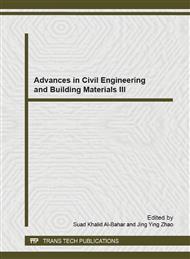p.145
p.149
p.153
p.158
p.164
p.170
p.176
p.181
p.186
Free Vibration Analysis and Damage Identification of Beam-Like Structures Containing a Crack Based on the Extended Finite Element Method
Abstract:
A scheme is presented for the free vibration analysis of beam-like structures containing a crack with the extended finite element method (XFEM). The scheme is compared with the traditional scheme with the finite element method. The natural frequency of a cantilever beam is analyzed using both the methods and the results are compared. A new method for the damage identification of a cantilever beam containing a crack is then presented.
Info:
Periodical:
Pages:
164-169
Citation:
Online since:
December 2013
Authors:
Price:
Сopyright:
© 2014 Trans Tech Publications Ltd. All Rights Reserved
Share:
Citation:


